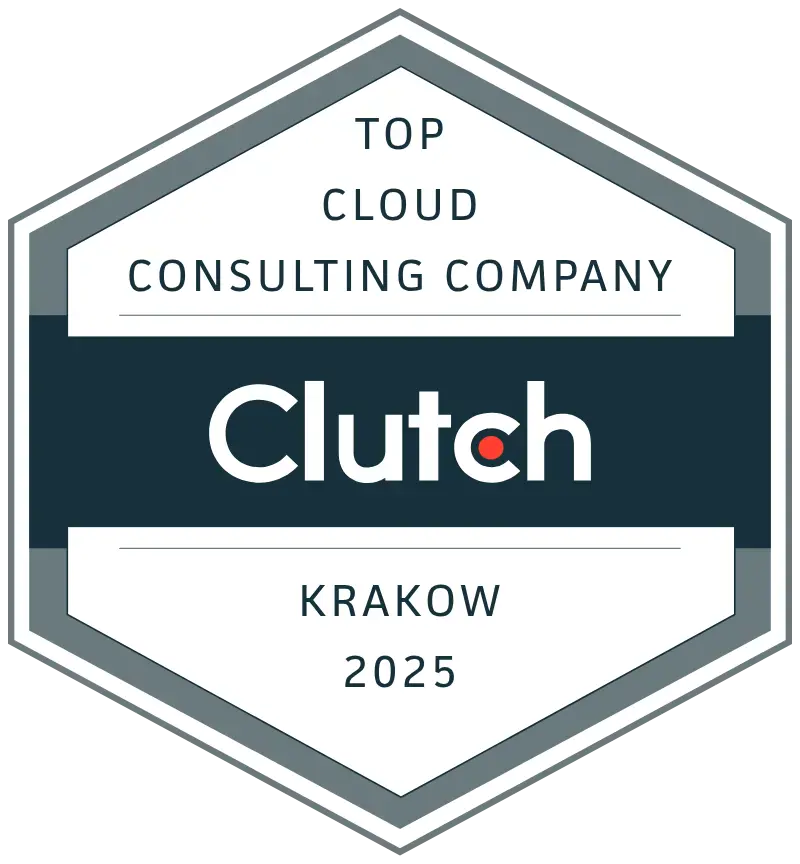How Can Blockchain Help Your Business? Case #2: Healthcare
Tue, Jul 1, 2025 •10 min read
Category: Blockchain
Over 176 million medical records were compromised in the USA between 2009 and 2017, exposing a critical vulnerability in traditional healthcare data systems. As healthcare organizations increasingly digitize patient records and expand data sharing initiatives, the need for robust, secure data management solutions has become more urgent than ever. Blockchain technology offers a revolutionary way to address these challenges. By creating decentralized, immutable ledgers that distribute patient data across multiple nodes instead of storing it in vulnerable centralized databases, blockchain provides healthcare providers with unparalleled security and transparency capabilities. This comprehensive guide explores how blockchain in healthcare is transforming medical data management, examining real-world applications, implementation benefits, and the challenges organizations face when adopting this emerging technology.
Key Takeaways
- Blockchain technology offers decentralized, secure, and immutable solutions for healthcare data management
- Major applications include electronic health records (EHRs), pharmaceutical supply chain tracking, and remote patient monitoring
- Benefits span patient-level improvements in data control to organizational efficiencies and government cost reductions
- Implementation faces challenges including regulatory compliance, legacy system integration, and high setup costs
- Real-world initiatives by IBM, Walmart, and MedRec demonstrate blockchain’s practical healthcare applications
- Adoption remains limited but growing, with potential for transformative impact on healthcare delivery
- Combining blockchain with AI might be a solution for most healthcare data challenges
Understanding Blockchain Technology in Healthcare Context
Blockchain creates a distributed, transparent ledger that records transactions across multiple computers, eliminating the single point of failure common in traditional centralized healthcare databases. This distributed ledger technology fundamentally changes how healthcare data is stored, accessed, and shared across the healthcare system.
The technology operates on four core principles, particularly relevant to the healthcare industry:
Decentralization ensures patient data isn’t stored on a single server but replicated across a blockchain network, making healthcare systems more resilient against downtime or cyberattacks. If any node fails, medical records remain accessible through other nodes in the network.
Immutability guarantees that patient records cannot be changed once entered, creating an original, provable, timestamped history crucial for medical record integrity and regulatory compliance. This feature addresses major challenges in maintaining accurate patient medical records across multiple healthcare providers.
Transparency enables all authorized healthcare professionals to access the same information in real time, enhancing trust between patients, providers, and insurance companies while improving care coordination.
Provenance verification allows tracing the source of each transaction or medical record, proving particularly valuable for both clinical trial data and pharmaceutical supply chain management.
Security is reinforced through cryptographic techniques that ensure only authorized users with appropriate digital keys can access, read, or write sensitive patient information. Advanced privacy measures include multilevel data de-identification, homomorphic encryption, and dynamic patient consent mechanisms that enable patients to grant and revoke data access permissions as needed.
Smart contracts represent another crucial blockchain feature for healthcare applications. These self-executing programs stored on the blockchain automatically trigger actions when specified conditions are met, potentially automating insurance claims processing, clinical trial participant payments, or care coordination protocols.
Current Healthcare Industry Challenges
Healthcare organizations globally face significant data and operational hurdles that blockchain technology aims to address:
Data Fragmentation and Interoperability Issues
Patient data remains fragmented across multiple healthcare providers, insurance companies, and healthcare systems, creating substantial barriers to coordinated care. The lack of interoperability among disparate electronic medical records systems makes longitudinal patient tracking extremely difficult, often resulting in duplicated tests, delayed diagnoses, and suboptimal treatment decisions.
Healthcare Data Security Vulnerabilities
Traditional centralized databases present attractive targets for cybercriminals seeking sensitive data. The healthcare sector experiences data breaches at alarming rates, with compromised medical records potentially leading to identity theft, insurance fraud, and disrupted patient care. Legacy systems often lack robust security protocols, making them particularly vulnerable to sophisticated attacks.
Complex Payment Processing Systems
The current healthcare payment ecosystem involves multiple intermediaries, creating inefficiencies in insurance claims processing. These complex workflows contribute to delayed reimbursements, increased administrative costs, and frequent billing disputes between healthcare providers, patients, and insurance companies.
Pharmaceutical Supply Chain Vulnerabilities
Global supply chains face ongoing challenges with counterfeit prescription drugs threatening patient safety. The lack of transparent tracking mechanisms makes it difficult to verify drug authenticity, monitor expiration dates, and ensure proper storage conditions throughout the distribution process.
Clinical Research Data Integrity
Clinical trials and biomedical research suffer from data integrity issues, including participant fraud, incomplete documentation, and difficulties in sharing research findings across healthcare institutions. These challenges slow medical innovation and compromise the reliability of clinical research outcomes.
Blockchain Applications in Healthcare
Electronic Health Records Management
Blockchain-based medical records represent one of the most promising applications for improving healthcare data management. Projects like FHIR Chain and Medshare demonstrate how blockchain technology can create decentralized, interoperable health records that give patients unprecedented control over their medical information. These blockchain-based systems enable patients to grant explicit consent for sharing all or portions of their healthcare records while setting specific conditions, such as access duration or authorized viewers. Smart contracts govern access permissions automatically, ensuring compliance with privacy frameworks while creating comprehensive audit trails that show exactly who accessed patient information and when.
The immutable nature of blockchain ensures that every amendment, access attempt, or sharing event is permanently logged, creating tamperproof patient records that healthcare professionals can trust for critical medical decisions.
Pharmaceutical Supply Chain Security
Blockchain technology addresses critical vulnerabilities in pharmaceutical supply chains through end-to-end tracking solutions. IBM and Walmart’s collaboration demonstrates how blockchain can create transparent, verifiable tracking systems that combat counterfeit medications while ensuring drug authenticity throughout the distribution process. MediLedger provides a consortium-based platform that verifies prescription drug authenticity, expiration dates, and supply chain status in real time. Every transaction, from manufacturing to final dispensing, is recorded immutably on the blockchain, enabling pharmacists and regulators to perform rapid verification checks using QR codes linked to blockchain backends. These supply chain solutions utilize GS1 global identification standards, facilitating integration and scalability across international markets and regulatory jurisdictions. The provenance verification capabilities help prevent pharmaceutical fraud while minimizing the impact of counterfeit drugs on patient safety.
Remote Patient Monitoring
Real-time health data from medical devices and wearables can be securely stored and shared through blockchain platforms using Hyperledger or Ethereum frameworks. IoT Health represents one such integration that ensures the integrity and privacy of continuously collected patient health data. Data from remote monitoring devices is cryptographically secured and uploaded as discrete, timestamped records that cannot be altered after creation. This approach protects sensitive patient information while enabling healthcare providers to track patients' health status remotely and respond quickly to concerning changes. Smart contracts analyzing this data can automatically trigger interventions such as emergency alerts or medication reminders, ensuring timely clinical responses while maintaining strict data security protocols. Advanced encryption protects both patient identity and device data, reducing privacy risks during remote monitoring scenarios.
Health Insurance Claims Processing
Blockchain streamlines complex health insurance workflows by automating claims adjudication and payment processes. Propositions like MIStore demonstrate how crypto-verified health coverage can reduce fraud while accelerating reimbursement cycles. Claims and associated evidence, including treatment records and billing information, are logged on the blockchain with smart contracts automatically validating eligibility and triggering payments. This automation creates transparent audit trails while reducing manual overhead and minimizing disputes between healthcare providers, patients, and insurance companies. The result is faster reimbursement cycles, reduced administrative costs, and improved trust between all stakeholders in the healthcare payment ecosystem.
Benefits of Blockchain Implementation in Healthcare
Patient-Level Advantages
Patients gain unprecedented control over their healthcare data through blockchain-based solutions. The technology provides complete transparency regarding who accesses their medical information, when access occurs, and for what purposes. This granular consent management allows patients to share specific portions of their health records with different healthcare professionals while maintaining privacy over sensitive information. Decentralized patient records reduce the risks of identity theft and large-scale data breaches that plague traditional centralized databases. Patients can maintain comprehensive, lifelong medical histories that follow them across multiple healthcare providers, improving care continuity and enabling more informed treatment decisions. The immutable nature of blockchain ensures that patients' medical records cannot be tampered with or lost, providing a reliable foundation for ongoing medical care and legal documentation when needed.
Organizational Benefits
Healthcare providers and healthcare organizations benefit from secure, real-time data sharing capabilities that reduce duplication of services and improve operational efficiency. Blockchain enables seamless information exchange within private healthcare networks while maintaining strict access controls and regulatory compliance. Clinical trial management is significantly enhanced through blockchain technology, as participant data can be managed securely with full provenance verification. This reduces the risk of clinical trial fraud while expediting regulatory approval processes for new treatments and medical devices. Medical professionals benefit from streamlined credential verification through platforms like ProCredEx, which use blockchain to create tamperproof provider credentials. This reduces onboarding timeframes for healthcare institutions while ensuring the authenticity of professional qualifications.
Government and Societal Impact
Public health systems can achieve substantial cost reductions through blockchain implementation, as the technology reduces healthcare fraud, waste, and administrative overhead. Government agencies benefit from enhanced transparency in healthcare spending while maintaining patient privacy through advanced cryptographic protections. Blockchain supports public health surveillance and population analytics by enabling secure aggregation of anonymized health data across multiple healthcare institutions. This capability proves particularly valuable during public health emergencies, enabling rapid response coordination and resource allocation. Integration with wearable medical devices and digital health tools provides governments with real-time population health insights that can inform proactive interventions for at-risk patients and enable evidence-based policy decisions.
Implementation Challenges and Barriers
Technical and Technological Threats
Scalability remains a significant challenge for blockchain adoption in healthcare. As user and transaction volumes increase, traditional blockchain networks may experience slower transaction speeds and higher energy consumption. Healthcare organizations must carefully evaluate whether blockchain systems can handle the massive data volumes generated by modern healthcare operations. If you use an experienced team, like Rumble Fish's blockchain experts, to build your healthtech platform, you won't have to worry about scalability, though. Professionals know how to successfully avoid that threat.
Security risks persist despite blockchain’s inherent protections, particularly around authorization management and off-chain storage solutions where large medical files are referenced rather than stored directly on the blockchain. Healthcare institutions must implement robust key management systems to prevent unauthorized access to sensitive patient information. Integrating blockchain solutions with legacy systems presents complex technical challenges requiring significant investment in both technology infrastructure and specialized expertise. Many healthcare organizations operate on outdated IT systems that may not easily accommodate blockchain integration.
Regulatory and Compliance Issues
U.S. healthcare regulations, such as HIPAA, create compliance complexities for blockchain implementation. The technology’s default transparency conflicts with certain privacy requirements, while the immutable nature of blockchain records makes it difficult to comply with “right-to-be-forgotten” regulations. The lack of established legal frameworks specifically designed for distributed ledger technology introduces investment risks and regulatory uncertainty that slows adoption decisions. Healthcare organizations must navigate evolving compliance requirements while ensuring patient privacy protection. Industry-wide standards for blockchain governance, interoperability, and compliance remain in development, creating uncertainty about long-term compatibility and regulatory acceptance.
Real-World Implementation Examples
Several organizations have successfully demonstrated blockchain’s practical applications in healthcare settings:
IBM and Walmart’s pharmaceutical tracking initiative provides end-to-end supply chain visibility that reduces counterfeit drug risks while ensuring medication authenticity. Their collaboration demonstrates how large-scale blockchain implementation can address critical patient safety concerns.
Oracle’s Blockchain Enterprise Edition supports advanced healthcare applications, including both supply chain management and electronic health record use cases, showing how established technology companies are investing in healthcare blockchain solutions.
Ethereum and Hyperledger Fabric have emerged as the most commonly adopted blockchain platforms in healthcare, supporting smart contracts, permissioned access controls, and customization for specific healthcare use cases.
Industry collaboration continues to advance through events like the ConV2X symposium in Cambridge, MA, which highlights decentralized technology innovations and fosters partnerships between healthcare organizations and technology providers.
Future Directions and Research Opportunities
Current research emphasizes the need for more empirical studies evaluating the clinical and economic impacts of blockchain implementation in real healthcare settings. Key areas requiring focused development include:
Scalability Solutions: Research into layer-2 solutions and hybrid blockchain architectures that can handle healthcare’s massive data volumes while maintaining security and performance standards.
Enhanced Cybersecurity: Development of advanced security protocols specifically designed for healthcare applications, including improved key management systems and protection against emerging cyber threats.
Interoperability Standards: Creation of standardized protocols enabling blockchain platforms to integrate seamlessly with existing electronic health records and health information systems across different healthcare organizations.
AI Integration: Research into combining blockchain with artificial intelligence for predictive analytics, demand forecasting, and supply chain optimization in healthcare settings.
Population Health Applications: Expansion of blockchain use cases to include pandemic surveillance, treatment outcome tracking, and public health resource distribution.
Environmental Impact Assessment: Analysis of blockchain’s energy consumption in healthcare relative to traditional centralized systems, with a focus on developing more sustainable implementation approaches.
The healthcare research community increasingly recognizes blockchain’s potential to accelerate medical innovation through secure, transparent data sharing that preserves patient privacy while enabling breakthrough discoveries in personalized medicine and population health management.
FAQ
What makes blockchain more secure than current electronic health record systems?
Blockchain distributes healthcare data across multiple nodes instead of storing it in a single vulnerable location, eliminating the single point of failure that makes traditional databases attractive targets for cyberattacks. The technology creates immutable audit trails that immediately detect unauthorized access attempts while using advanced cryptographic protection to secure sensitive patient information.
How does blockchain ensure patient privacy while enabling data sharing?
Blockchain uses sophisticated encryption systems with private and public key pairs, similar to secure email protocols, that allow only authorized healthcare providers with corresponding private keys to access specific patient data. Patients maintain granular control over their health records, deciding exactly which information to share with whom and for how long.
What are the main barriers to blockchain adoption in healthcare?
Key barriers include regulatory compliance requirements with healthcare laws like HIPAA, integration challenges with legacy systems, high implementation costs, and the fragmented nature of the healthcare industry. Additionally, the healthcare sector faces skill gaps in blockchain expertise and uncertainty about long-term return on investment.
Which blockchain platforms are most commonly used in healthcare?
Ethereum and Hyperledger Fabric represent the most widely adopted blockchain platforms for healthcare applications. These platforms support smart contracts and enterprise-grade solutions while offering the flexibility needed for healthcare-specific use cases, including patient consent management and clinical trial data protection.
What is the current state of blockchain adoption in healthcare?
Blockchain adoption in healthcare remains primarily limited to pilot projects and specialized use cases, though real-world implementations by major companies like IBM, Walmart, and various electronic health record platforms demonstrate growing practical applications. The technology shows significant promise, but widespread adoption awaits resolution of regulatory, technical, and economic challenges facing the healthcare industry.









